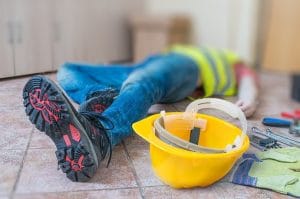 Illinois workers’ compensation lawyers know that on-the-job safety can be largely dependent on company culture. A firm that prioritizes worker safety is going to have fewer workplace injuries, and that holds true even for some of the most dangerous industries. That’s because most worker injuries are preventable, if employers take the time to properly train, equip and supervise workers.
Illinois workers’ compensation lawyers know that on-the-job safety can be largely dependent on company culture. A firm that prioritizes worker safety is going to have fewer workplace injuries, and that holds true even for some of the most dangerous industries. That’s because most worker injuries are preventable, if employers take the time to properly train, equip and supervise workers.
But a new study finds that if companies are more focused on their bottom line and meeting earning quotas, workplace safety falls by the wayside, resulting in more reported injuries and workers’ compensation claims. Increasingly, companies throughout the U.S. are under intense pressure to meet stringent earnings expectations and quotas.
The study was published recently in the Journal of Accounting and Economics. It finds a causal correlation between high earning pressure and workplace injuries. The authors analyzed injury data from 870 companies, as provided to the U.S. Occupational Safety and Health Administration (OHSA) between 2002 and 2011. In all, there were 35,400 reports analyzed. What they found was that when companies met or just barely exceeded the financial expectations of their sector, their injury rate was 1 in 23. Meanwhile, companies that missed that substantially missed that mark – either falling short or exceeding it comfortably – had an injury rate of 1 in 27.
 The Center for Construction Research and Training has organized data from the NIOSH Fatality Assessment and Control Evaluation program to create a searchable database of construction fatalities. Using this database, they were able to identify trends in construction fatalities from 1982 to 2015.
The Center for Construction Research and Training has organized data from the NIOSH Fatality Assessment and Control Evaluation program to create a searchable database of construction fatalities. Using this database, they were able to identify trends in construction fatalities from 1982 to 2015.

 We grind. We tough it out. The subtle suppression of yawns could almost be considered part of our necessary skill set. We close our eyes “just for a second.” Just a second. What could go wrong?
We grind. We tough it out. The subtle suppression of yawns could almost be considered part of our necessary skill set. We close our eyes “just for a second.” Just a second. What could go wrong? In late September of this year,
In late September of this year,  Anybody who has ever worked a job where they spend most of the day on their feet is well-aware of the physical toll it can take.
Anybody who has ever worked a job where they spend most of the day on their feet is well-aware of the physical toll it can take. A new study by
A new study by  Work-related injuries in Illinois are compensable to employees under two conditions:
Work-related injuries in Illinois are compensable to employees under two conditions: Illinois workers’ compensation lawyers know that on-the-job safety can be largely dependent on company culture. A firm that prioritizes worker safety is going to have fewer workplace injuries, and that holds true even for some of the most dangerous industries. That’s because most worker injuries are preventable, if employers take the time to properly train, equip and supervise workers.
Illinois workers’ compensation lawyers know that on-the-job safety can be largely dependent on company culture. A firm that prioritizes worker safety is going to have fewer workplace injuries, and that holds true even for some of the most dangerous industries. That’s because most worker injuries are preventable, if employers take the time to properly train, equip and supervise workers.






